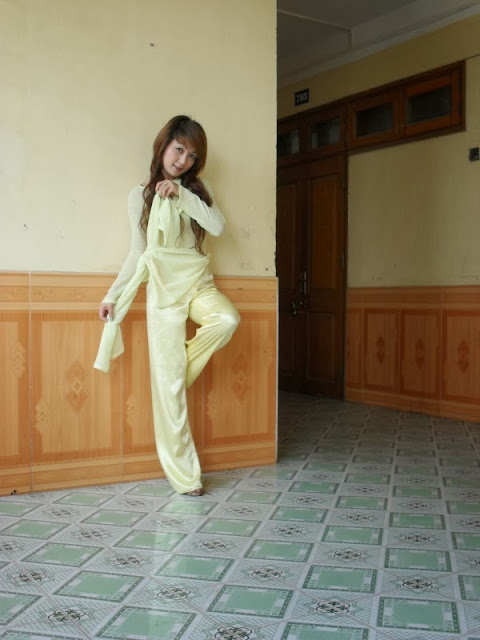The styles of Vietnamese long dress, or ao dai, have gone through
a number of changes over different periods, and it is still survives today,
marking Vietnamese traditions.
Even though the ao dai has not been officially announced as the national costume, it is recognised as a symbol of Vietnam by both local people and foreigners. It is unknown exactly when the ao dai was first designed. Some said the Trung Sisters wore a two-flaps ao dai as far back as AD38-42, while others think it appeared in 17th century, during the Nguyen Dynasty, under the reign of Nguyen Phuc Khoat Lord. However, ao dai styles also changed with each stage of history.
When
Vietnam became a French colony and was influenced by western culture, people
started to try to modernise the ao dai. The trend began in the early 1930s,
with painter Cat Tuong, also known as Le Mur, who redesigned the ao dai to fit
more closely to the body, along with larger collars, puffy shoulders and wavy
sleeves in a fusion with western dress of the time. Vibrant colours schemes
were also introduced along with original dark-coloured ao dais.
The Le Mur Ao Dai fashion lasted for four years until the painter
Le Pho attempted to remove all western influence from the Le Mur ao dai in 1934
and used the four-paneled dresses to conform with current standards. His design
was popular for nearly 30 years.
Ao dais had a comeback in the early 1960s. If previous ao dais
were worn loosely before, they became more form-fitting than ever after the
existence of bras were introduced to the country. A tailor in HCM City named
Dung Dakao launched a new “Ao dai Raglan” to be worn with trousers. The way to
sew the sleeves and the body at the the armpit and shoulder helped get rid of
wrinkles.
By the end of the sixties, a 'hippy' ao dai fashion flooded the
streets. These were colourful dresses with flaps to the knees. But then the
form-fitting ao dai returned after 1975 with tight sleeves, a high collar and
flared trousers.
Over
the times, when the fashion world bloomed and women started to show off their
curves in Vietnam, the need to renovate ao dai to meet with modern fashion came
back to the design world. Instead of fading away like many traditions, the ao
dai is still the favoured dress at many formal occasions and remain popular
today.
The cuts have become more bold and styles are varied with
embroidered and detailed patterns. All kinds of material, from silk, lace to
sheer, are used to create ao dais while some people wear jeans or shorts
instead of the traditional flared trousers. Even the two flaps are cut real
short or widened, though some of the new designs are not welcomed by
traditionalists.
Ao dais are considered the
symbolic dress of Vietnam, so it is strongly criticised by public when a
designer alters it to make it more 'sexy' or be more in tune with current
fashion. Many people say that the new form of ao dai is not even an ao dai.
Designer, Minh Hanh, who is well-known for her brocade ao dai
collections, said it takes a strong will in order to modernise the ao dai.
"Many designers want to be creative and unique, while retaining tradition.
But they most have failed because they wanted a fast victory. They have forgot
the difference between the unique and the strange. They need cultural knowledge
and also to respect tradition." she said.
Hanh affirmed that it takes passion and knowledge
for the ao dai in order to know what to keep and what to discard when a
designer renovates this type of dress.






















.jpg)



0 nhận xét: